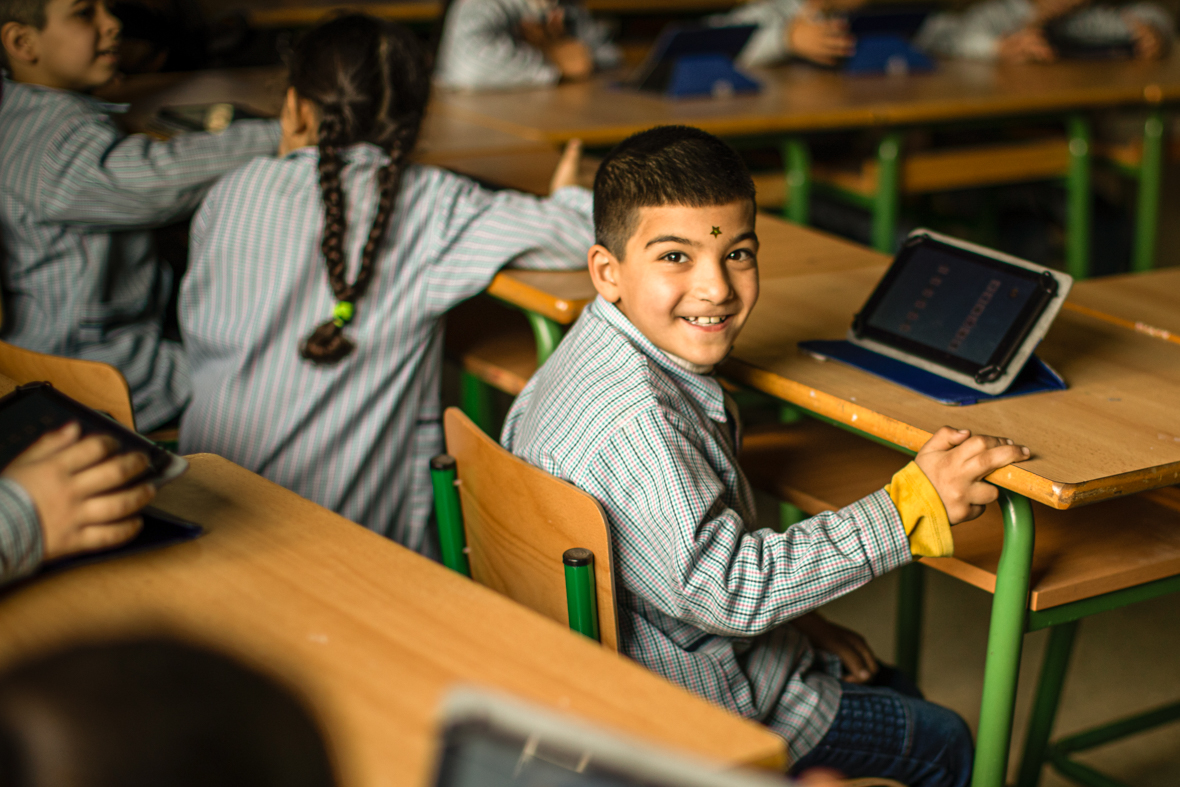
EU aid to help educate 2.3 million children living in emergencies
Children in conflicts, Education funding, Education in emergencies
Iraqi student Digana, second left, is happy to be back at school in Zumar – but millions are denied an education Picture: UNICEF/Anmar
More than 2.3 million children in 42 countries will be helped by a European Union package of aid aimed at education in emergencies.
The $59 million of funding will be targeted at regions where children are at higher risk of being left out of school or having their education disrupted. They include the Middle East (especially Syria and Iraq); East, Central and West Africa; Asia; Ukraine; Central America; and Colombia.
A World at School has been calling on world leaders to commit to set up a platform to fund education in emergencies, including wars and natural disasters.
More than 80 million children had their education disrupted in 2015 by emergencies. They need safe places to learn and recover from their trauma – but less than 2% of humanitarian aid went to education last year.
Today’s announcement by the European Commission reflects a commitment to allocate 4% of its humanitarian aid budget to education – up from just 1% in 2015
Christos Stylianides – the EU Commissioner for Humanitarian Aid and Crisis Management – revealed the increased funding in a statement and a blog for the Education Commission, which is investigating how to provide education for every child.
Syrian students – these girls are at a camp in Tartous – will get access to digital resources Picture: UNICEF/Saker
He said: “Investing in education now for children caught up in conflict zones and other emergencies is an investment against the risk of a lost generation and an investment for the future.
“I’m proud that the European Union is becoming a leader in this field. I now call on all humanitarian donors to follow our example.”
The EU funding will support access to education in emergency situations – including mine risk education, life skills and vocational training, recreational activities and psychosocial support.
School materials and new education facilities are also among the benefits, along with training for teachers, parents and caregivers.
A wide range of NGOs, United Nations agencies and international organisations will channel the aid to where it is most needed.
This will include UNICEF improving the quality of children’s learning environment in Aleppo, Syria, by providing solar panels to schools often affected by power cuts. Syrian children will be able to access digital resources in schools through low-cost computers and tablets.
Ethopian teachers at refugee camps, like this one near Gambella, will be given training Picture: UNICEF/Ose
In Ethiopia, Save the Children will improve access to quality learning for children in refugee camps by providing training to teachers and by renovating or creating new safe learning spaces.
The additional European funding was welcomed by Gordon Brown, chair of the Education Commission and the United Nations Special Envoy for Global Education.
He said: “This is the first stage of a new system of support on a continuous basis for humanitarian aid to education in emergencies.
“There are 30 million displaced children around the world who need this support and the European Union has led the way in pioneering new forms of giving.”
The announcement is a major boost to the funding of education in emergencies. But much more still needs to be done.
You can send a message to leaders meeting at the first ever World Humanitarian Summit in May – ensuring they commit to set up a new platform to fund education in emergencies.
Theirworld – the children’s charity behind A World at School – has launched the #SafeSchools campaign to keep up public pressure. Please sign the #SafeSchools petition.
More news

